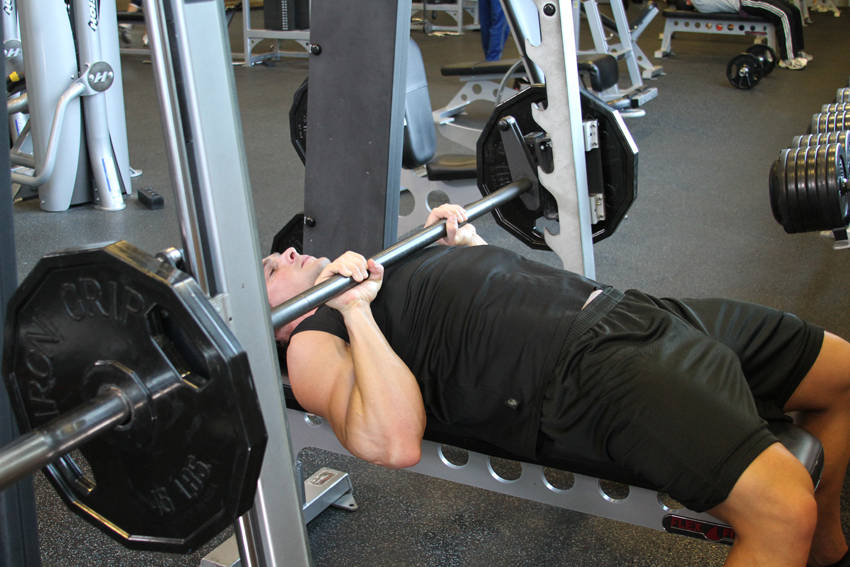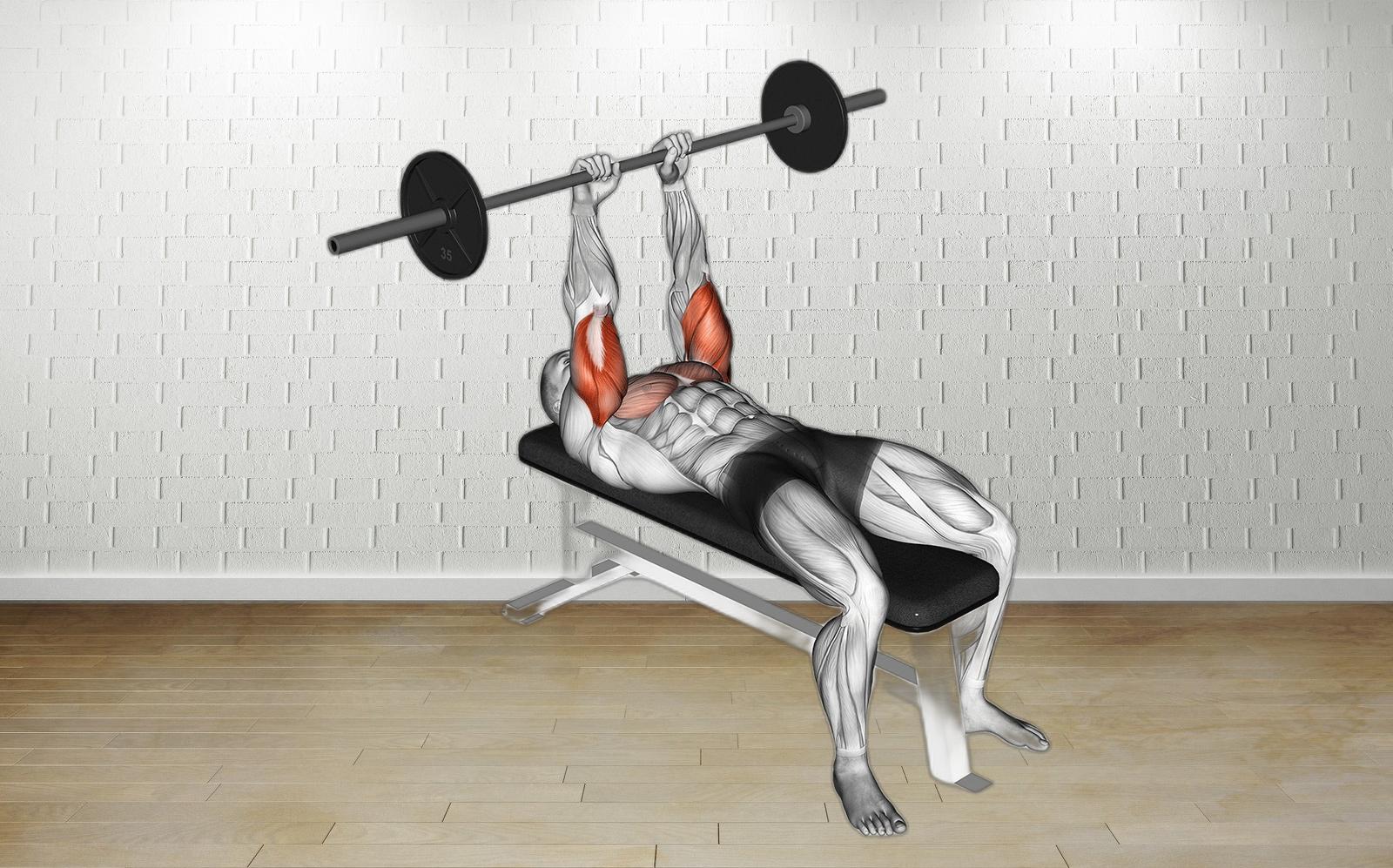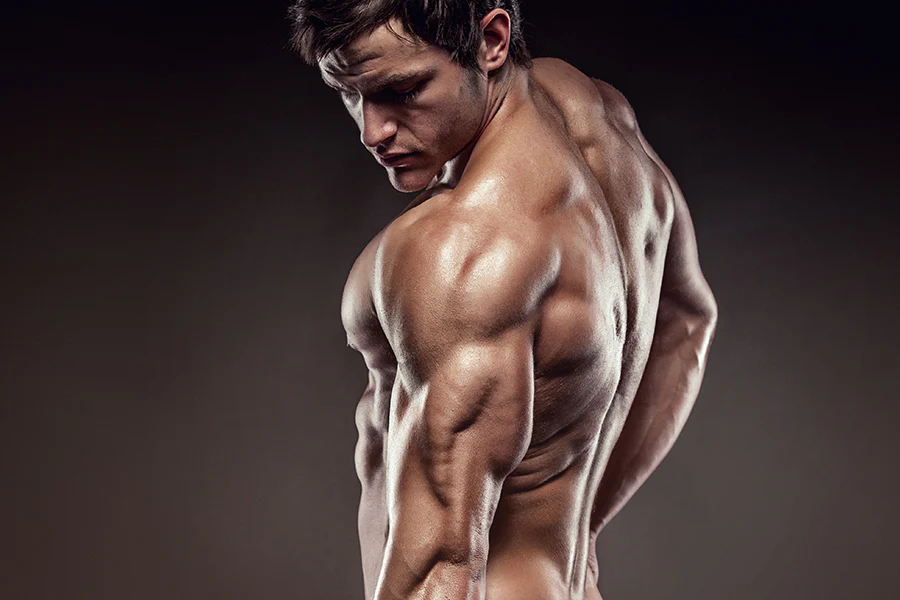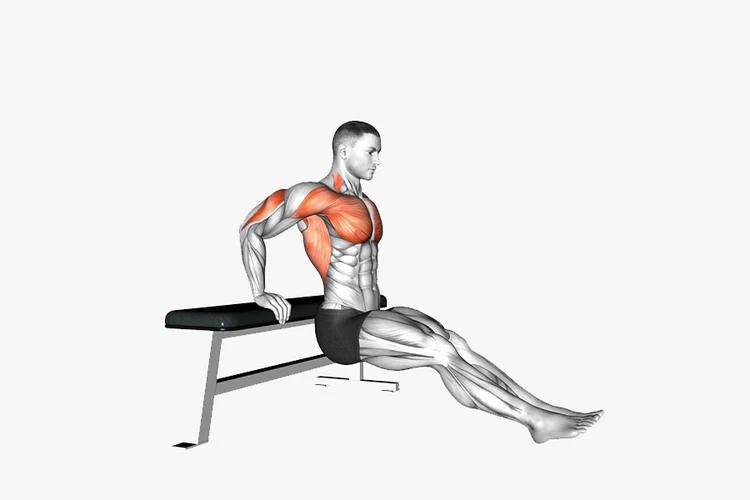JM Press: The Hybrid Power Move for Explosive Triceps Growth
If you took the Close-Grip Bench Press and Skullcrusher, mixed them together, and added a touch of powerlifting precision — you’d get the JM Press.
Named after JM Blakley, an elite powerlifter and strength coach, the JM Press is a hybrid pressing movement designed to maximize triceps strength and size while improving pressing performance. It looks simple, but it’s a movement that sits right between two worlds: the mechanical tension of a press and the isolation of an extension.
For bodybuilders, that means one thing: massive triceps development with the added benefit of improved strength carryover to every upper-body press — from bench to overhead.
This is a “thinking lifter’s” movement — technical, controlled, and brutally effective when performed right. Let’s break down everything you need to know to master it, from form to programming, so you can unlock new levels of triceps size and pressing power.
Muscles Worked
Primary Muscles:
- Triceps brachii (all three heads, heavy emphasis on medial and lateral heads)
Secondary Muscles:
- Anterior deltoids
- Pectoralis major (upper fibers for stabilization)
- Forearms and grip (stabilization)
💡 Biomechanics insight:
Unlike standard presses, the JM Press limits chest involvement by shortening the range and shifting emphasis directly onto the triceps through the mid and lockout portions of the movement.
Why the JM Press Is a Game-Changer
- Bridges Two Power Moves
- Combines pressing strength with isolation control — the best of both worlds.
- Builds Lockout Power
- Strengthens the upper triceps range critical for bench press performance.
- Targets Triceps Directly Under Load
- Keeps constant tension through a shortened range of motion.
- Joint-Friendly Alternative
- Smoother on elbows than heavy skullcrushers, but just as effective for growth.
- Progressively Loadable
- Barbell-based movement allows for consistent overload without sacrificing isolation.
How to Perform the JM Press (Step by Step)
Equipment
- Flat bench
- Barbell or EZ-bar (EZ-bar reduces wrist strain)
- Optional: power rack or spotter for safety
Setup
- Lie on a flat bench, similar to a close-grip bench press setup.
- Grip the bar with hands just inside shoulder width (a close, but not ultra-narrow, grip).
- Unrack the bar and hold it directly over your upper chest — elbows tucked at about 45°.
- Keep your shoulder blades retracted and feet flat for stability.
Execution
- Descent (Controlled Lower):
- Lower the bar by bending your elbows forward, not back.
- The bar should travel in a diagonal path — down toward your chin or upper chest.
- Keep elbows tucked, not flared.
- Stop when your forearms touch your biceps or the bar is about 2–3 inches above your chest.
- Pressing Phase (Upward Drive):
- Extend the elbows, pressing the bar back up along the same path.
- Focus on driving through the triceps, not the chest.
- Lock out under control — no jerking.
- Form Cues:
✅ Bar travels diagonally — not straight down.
✅ Keep elbows forward and close.
✅ Control every inch of the rep.
✅ Avoid bouncing or lowering too low.
Breathing
- Inhale on the descent.
- Exhale as you press the bar upward.
Tempo
- Lower: 2–3 seconds under control.
- Pause: 0.5–1 second at the bottom (optional for stability).
- Press: 1 second smooth extension.
Key Differences: JM Press vs Other Movements
| Exercise | Motion Type | Primary Focus | Joint Stress | Load Potential |
| JM Press | Hybrid press-extension | Triceps lockout & strength | Moderate | High |
| Skullcrusher | Isolation | Long head stretch | Moderate-high | Moderate |
| Close-Grip Bench Press | Compound press | Overall triceps + chest | Low-moderate | High |
| Overhead Extension | Isolation (stretch) | Long head | Moderate | Moderate |
👉 The JM Press fills the sweet spot — heavy enough for strength, isolated enough for hypertrophy.
Common Mistakes and Fixes
| Mistake | Problem | Fix |
| Lowering bar straight down | Turns it into a standard close-grip bench | Keep elbows forward; let the bar travel diagonally |
| Flared elbows | Overloads shoulders, reduces triceps focus | Tuck elbows 45° |
| Excessive ROM | Shifts tension to chest and shoulders | Stop before bar touches chest |
| Bouncing off chest | Removes muscle tension | Maintain control and steady tempo |
| Too heavy too soon | Ruins technique, increases elbow stress | Start light, focus on groove and control |
Variations
- EZ-Bar JM Press
- Easiest on wrists and elbows; great for hypertrophy work.
- Smith Machine JM Press
- Provides fixed bar path for stability — excellent for strict isolation.
- JM Dumbbell Press
- Unilateral control, ideal for imbalances and mind-muscle focus.
- Incline JM Press
- Slight incline bench shifts tension differently and improves stretch.
- Reverse Grip JM Press
- Targets the lateral head even more, though requires careful setup.
Programming Guidelines
For Hypertrophy (Muscle Growth)
- Sets: 3–4
- Reps: 8–12
- Tempo: Controlled, 2–3 sec eccentric
- Rest: 60–90 seconds
- Focus: Tension and form precision
For Strength and Lockout Power
- Sets: 4–5
- Reps: 4–6
- Tempo: Moderate
- Rest: 90–120 seconds
- Goal: Progressive overload with perfect control
For Pump / Finisher Work
- Sets: 2–3
- Reps: 15–20
- Tempo: Slow, squeezing at lockout
- Rest: 30–45 seconds
- Goal: Triceps burnout and endurance
Integration Into Training Splits
Example Arm Day
- Close-Grip Bench Press – 4×6
- JM Press – 4×8–10
- Overhead EZ-Bar Extension – 3×12
- Rope Pushdowns – 3×15
Example Push Day
- Bench Press – 4×6
- Overhead Press – 3×8
- JM Press – 3×8–10
- Dips – 3×12
- Rope Extensions – 3×15
💡 The JM Press fits beautifully as a middle exercise: heavy enough to build strength, isolated enough to target the triceps deeply before pump work.
Advanced Training Techniques
- Reverse Pyramid Sets
- Start heavy for 6 reps, reduce weight 10–15% each set, increase reps.
- Rest-Pause Training
- Hit failure, rest 10–15 seconds, then squeeze out 2–3 more reps.
- Paused Reps
- Hold for 1–2 seconds at the bottom to eliminate momentum.
- Mechanical Drop Set
- Superset JM Press → Close-Grip Bench Press — same bar, same setup, no rest.
- Tempo Emphasis
- Focus on a slow 3-second eccentric to maximize tension.
Bodybuilder’s Tips
💡 Wrist angle: Use the EZ-bar for comfort — the neutral angle protects joints.
💡 Keep elbows fixed: Don’t let them drift outward or backward.
💡 Mind the range: Only lower until forearms touch biceps — any deeper shifts tension away.
💡 Focus on extension, not press: Think “drive through triceps,” not “press the bar.”
💡 Warm up thoroughly: Elbows need to be prepared; 2–3 light sets before working weight.
Strength vs Aesthetic Outcomes
| Focus | Training Style | Result |
| Strength | Heavy, low-rep JM Presses | Improved bench press lockout |
| Hypertrophy | Moderate load, high control | Bigger, denser triceps |
| Conditioning / Pump | High-rep, light weight | Enhanced shape, vascularity |
Safety Considerations
- Keep elbows slightly forward, not flared.
- Avoid ego lifting; too heavy ruins form quickly.
- If you feel elbow strain, reduce load or switch to EZ-bar/dumbbells.
- Don’t bounce the bar — control every inch.
Practical Takeaways
✅ The JM Press is a hybrid strength-builder and mass movement.
✅ Prioritize form and elbow control before loading up.
✅ Best performed mid-workout, after compound presses, before pump work.
✅ Alternate with skullcrushers or rope pushdowns for total triceps development.
✅ Expect serious size and strength gains once mastered.
Conclusion
The JM Press isn’t a flashy movement — but it’s one of the most potent triceps builders you can perform. It demands technical precision, but in return, it delivers unmatched results: thicker arms, stronger presses, and sculpted triceps detail.
It’s the perfect example of a hybrid movement that bridges bodybuilding and powerlifting — giving you both mass and performance.
If you’re serious about unlocking new levels of arm development, learn to own the groove of the JM Press. Control the bar, feel the tension, and drive with intent. Over time, your triceps will respond with strength, density, and that signature 3D horseshoe shape.
Train smart, train strict — and let the JM Press do the heavy lifting.





